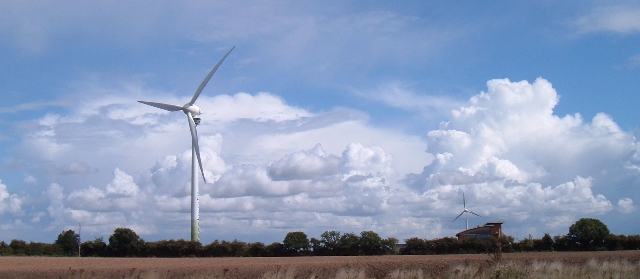
– by Maria Ruth
For the past two years, the Black Hills (BHAS) and Willapa Hills (WHAS) Audubon Society’s Conservation Committee have been tracking the development of the Skookumchuck Wind Energy Project, a 38-turbine project on Weyerhaeuser Company’s Vail Tree Farm in Lewis and Thurston Counties near the Skookumchuck Reservoir. Because of the potential negative impact to wildlife—especially the protected Golden Eagles, Bald Eagles, and Marbled Murrelets—the project developer, RES-Americas, was required to prepare an Environmental Impact Statement and Habitat Conservation Plan.
Like National Audubon, BHAS strongly supports properly planned, sited, and operated wind power as a renewable energy source that helps reduce fossil-fuel carbon emissions, thus reducing the threats posed to birds and people by climate change. BHAS and WHAS have worked closely and collaboratively with staff from both RES-Americas and the U.S. Fish & Wildlife Service during the development of the required documents to help ensure the 38 wind turbines and related infrastructure would be planned, sited, and operated in ways to minimize harm and to mitigate the loss (“take”) of eagles and murrelets.
Our chapters strongly support RES-Americas’ plans, as far as they go, to minimize harm to murrelets through the curtailment of select turbines during periods of peak murrelet activity during the summer breeding season when these seabirds fly inland to nest. And we support their plans to use state-of-the art technology (Identiflight) to temporarily stop turbines when eagles are detected flying near the project area.
We appreciate their proposed solutions to mitigate the take of murrelets and eagles. RES-Americas will acquire 620 acres of forested habitat in Pacific County to be conserved and managed in perpetuity for nesting murrelets and will fund the removal of derelict fishing gear in the Salish Sea to reduce fatal bycatch of murrelets. To mitigate the take of eagles, RES-Americas will fund the retrofitting of between 145 and 332 high-risk power poles in Idaho, Utah, and Wyoming to mitigate the fatality of eagles by electrocution.
However, we believe that more could have been done to protect murrelets, throughout their full breeding season (April-September) without significantly reducing total power generated, as we specifically outlined in our recent statement to RES-Americas and US Fish & Wildlife Service.
It is our hope that additional curtailment of turbines will occur as soon as the need is identified.
RES-Americas has developed an intensive post-construction monitoring program as part of their adaptive management plan. This will allow them to track eagle and murrelet fatalities at the project site and to modify turbine operations if the take level of these birds is higher than projected. Herein may lie the problem; can such modifications be made quickly and successfully to better protect the birds?
Construction has already begun of the Skookumchuck project and the project will begin operations in 2021. The turbines will generate 137 megawatts of power for distribution through Puget Sound Electric.







